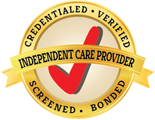Physical activity is the key to healthy aging, but by age 75, one in three men, and one in two women engage in no physical activity. This is a disheartening statistic considering all of the evidence linking physical activity in older age to benefits such as decreasing the risk of dementia, lowering the chance of falling, and increasing the quality of life for those living with chronic conditions.
So why are so many older adults inactive? The task of beginning to exercise again can seem daunting or painful, and there is a general lack of motivation. However, when considering the benefits, there shouldn't be excuses to avoid getting out and moving. We have compiled a list of several tips to help ease the transition back in to exercising, and to make active aging a normal part of life.
Getting Started
You have taken the first step. You have made the decision to start reaping the benefits of physical activity. Now where do you start? First off, it is important not to be too hard on yourself, whatever has kept you from exercising thus far is in the past now, and you are on the way to getting back to your activities. Here are a few easy steps to follow to get your exercise routine back on track:
1. Think about the reasons you want to start exercising
When you think about specific reasons you want to get active again - be more social, alleviate pain, spend time outside, strengthen muscles - and set small goals to get there, it helps to create motivation and gives you something to work toward. If you ever have to take a break from exercise in the future, remembering these reasons can help you get started again.
2. Make a physical activity plan
Plans help you stay motivated and organized. Once you have decided why you want to exercise, draft up a plan to get the process underway. Your plan should include reasons for getting active, short and long term goals, specific activities, and details about where, when and who will be exercising with you.
3. Start at a comfortable level of activity and gradually build back up
All older adults who are planning to get back into an exercise routine should first talk to their doctor to discuss what is right for them. However, for seniors that are just getting active again, it’s best to start with 5-10 minutes of moderate physical activity per day, and gradually build up to the desired amount.
4. Try an activity you have never done before
It is easier to get back into exercise if you are excited about the activity, new types of exercise can provide this excitement. Low impact exercising is easier on your body, especially your joints. Try something in the water - water aerobics and swimming are great for older adults. Tai Chi and yoga are also fun ways to get moving.
Staying Active
The hard part is over. Getting started after a long break from exercise is the most difficult. Staying active should be fun and feel easier because your body is undergoing noticeable benefits. If you ever have to take a break from activity, don't be too hard on yourself, just pick back up where you left off. Here are a few tips for maintaining an active and healthy lifestyle:
1. Make time for exercise
It's good to exercise in the morning to avoid getting to busy later in the day. Also, evidence shows that you are more likely to exercise if it is convenient. Try to combine physical activity with something that is already part of your day, such as walking every aisle at the grocery store
2. Stick to your exercise plan
Use your exercise plan to keep you organized and on track, and keep updating it so that it picks up the pace to reflect your new energy and abilities. Not only will this keep you going, it's a great way to see how far you have come which is just some added motivation
3. Make it social and fun!
Exercise shouldn't feel like a chore. Do things that you think are fun and you are more likely to keep at them. Some of your favorite hobbies are already great exercise - golf is good for flexibility and gardening is a useful strength training exercise. Exercising with friends can boost morale and motivation, and it keeps you in touch with your buddies.
Now that you have some useful tips that are easy to implement, take the first step and get moving. Small changes in your daily routine can lead to wonderful benefits that improve your quality of life. Make the healthy choice and get active today, your body and your mind will thank you.
At American In-Home Care, we always refer qualified, screened, care providers that can assist you with your in-home care needs, including mobility and exercises. Contact a Client Care Liaison at any time to set up a free assessment of your in-home care needs; they can provide you with additional information about which care options are right for you and your family. We are available to take calls 24/7 at 1-844-505-0004.

 Falls among the elderly are a leading cause of debilitating injury
Falls among the elderly are a leading cause of debilitating injury